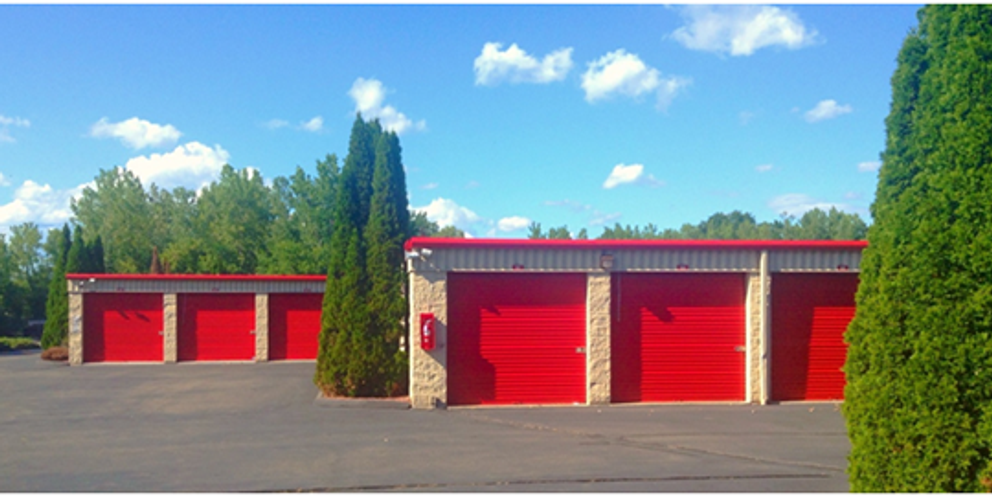
How to Store Your Car in a Storage Unit
Written By: John Linden
Your vehicle is a complex combination of thousands of individual parts and pieces. Proper maintenance is key to ensuring all of those elements continue to function at peak efficiency. When you are unable to operate or service your vehicle for an extended period, this complex network of machined pieces begins to break down. To avoid and negate this deterioration you need to place your vehicle into the proper type of storage, and arguably more importantly, properly prep your vehicle for inactivity.
The proper type of storage for many long-term situations is going to be a vehicle storage unit. We are going to talk about vehicle storage units as well as a couple other storage options, and then we will break down how to properly store your vehicle in a storage unit.
Table of Contents

Deciding on the Right Type of Storage
Where you store your car will have a significant effect on the well-being of your vehicle in the long run. If you are only looking for a short-term solution then a simple outdoor storage lot should suffice. If you plan on being away or not using the vehicle for an extended period of time, then you will have to find a more protected storage solution.
For long term storage, there are two general types of options. You can opt to use a covered lot, or you can utilize a personal vehicle storage unit. A covered lot will protect your vehicle from the worst of the elements but is still rather exposed to the public and other dangers. If you go with a covered lot than make sure you have a proper car or truck cover and have removed any valuables.
A vehicle storage unit will both provide the best protection from the elements as well as break-ins. These storage units keep a vehicle as well kept and safe as if they were sitting in your own garage.
If you have an expensive classic car*, it is also possible, though rare, to find a suitable climate-controlled storage unit (you may even need to use a designated showroom).
Evaluate how long you will be gone and weigh it against the storage costs and value of your vehicle. There are various types of storage units each with their own slightly unique pros and cons.
*Note: Some classic cars may require unique steps to be taken in their proper storage. In those cases, consult with a specialist on appropriate storage steps to be made.
How to Store Your Car
You will need to more than simply put your car in the storage unit and lock the door. Proper storage requires a good deal of prepatory manintenace in order to be done correctly.
1. Get a Storage Unit of a Suitable Size
The first thing you will want to do when storing your car In a storage unit is to find a storage unit. You will want to measure or look up the dimensions of your vehicle and then ensure that the unit you rent out gives you enough wiggle room on all sides. You will want a unit that allows you to at least walk around your vehicle.
10x15’ Storage Units are suitable for compact cars such as:
· Mini Cooper and Smart Fortwo ED
· Volkswagen Golf and Volkswagen GTI
10x20’ Storage Units are suitable for most commonly used vehicles. Examples include but are not limited to:
· Ford Explorer
10x25’ and above Storage Units are suitable for larger crew cab trucks or commercial vans.
2. Clean Your Vehicle
Before you put your vehicle away for an extended period you want to make sure you remove as much dirt, grime, rust and buildup as possible. This will help your vehicle last longer and prevent the parts from deteriorating as much during the storage period.
This thorough cleaning also involves removing the battery to stop any acid from leaking and wearing away the engine. This is especially important for the winter months which take a more substantial toll on the batteries.
You will also want to change your oil before placing the vehicle into storage. This reduces any contaminates currently in your used oil that may lead to further damage over time. This same rule applies to the brake fluid and the antifreeze.
Properly checking and cleaning all fluids and temperamental items like the battery will ensure the interior of your vehicle lasts as long as possible in good condition.
3. Fill the Fuel Tank
You will also want to fill your tank up with premium fuel to avoid condensation. The added fuel will prevent water build up in the gas tank. Premium gas will sometimes not contain ethanol which is corrosive over long periods.
4. Wash and Wax Your Vehicle
Removing as much dust and grime as possible is just as crucial to the longevity of the outside of your vehicle as it is to the inside. Dirt and mess can lead to damage to your car's finish or can even attract insects and rodents.
Vacuum, dust, and shampoo the interior of your vehicle's seats and floor to ensure that nothing is causing a bad smell that can attract unwanted pests. Though a functional storage unit will prevent these pests, you will still want to avoid the odors and possible long-term damage to the vehicle interior. Apply a conditioner to vinyl to prevent it from drying out.
A wax coating will add a protective layer to your vehicle once it is washed and dried.
5. Check the Tires
When a tire does not move for an extended period of time the pressure weighing down on it will eventually cause flat spotting. This is simply a by-product of the design of tires. If you are storing your vehicle longer than a month, this will likely become an issue.
One thing car owners do to avoid flat spotting is to rest the car on blocks or jack stands to give added support. This added support will take the pressure off of the tires and will slow decompression. Adding the support of the jack stands or blocks will also take the pressure off the suspension components of your car -increasing the lifespan of your shocks and bushings.
If you cannot put the vehicle on jack stands or blocks, then the next best thing is to make sure your tires are at their optimal air pressure before being put into storage.
6. Check up on the Vehicle When Possible
Though it may not always be feasible, visiting your vehicle every few months to start it up and drive it a short distance is the best way to ensure a long and healthy life. Starting the engine every so often will keep all the parts operating correctly and will break up build up accumulation before it becomes an acute problem.
A regular check up will also allow you to spot check any specific issues that may be becoming worse over time. As long as you keep the car stored safely, and you provide regular maintenance, your vehicle can last into the foreseeable future.
Also, ensure your storage unit has remained dry. A small leak can become a huge issue over time and can lead to incredible amounts of damage if not taken care of immediately. Check for humidity and pools of water.
A regular check up is also essential for security reasons. Long abandoned storage units are more likely to be broken into.
Other Storage Tips
Keep one of the windows very slightly cracked when inside a storage unit. This will keep the air inside and outside the vehicle balanced while still not allowing any critters inside.
Release the handbrake and keep the vehicle stationary with blocks. This will prevent the brake pads from sticking to the rotors.
Lock your doors.
Try not to use a Car Covers for indoor storage during humid weather. This can lead to unwanted humidity and condensation build up within the vehicle.
Avoid storage near the ocean whenever possible. If unavoidable be sure to use a very good spray wax and apply to your vehicle's entire exterior. Run your engine for at least 15 minutes every week to avoid the worst of the possible corrosion.
Most car manufacturers put out guides and tips for their specific models. Double check the specific needs of your vehicle before committing to a long-term storage scenario.
Featured Image Credit: Mike Mozart / flickr
In Post Image Credit: Clker-Free-Vector-Images / Pixabay
Updated